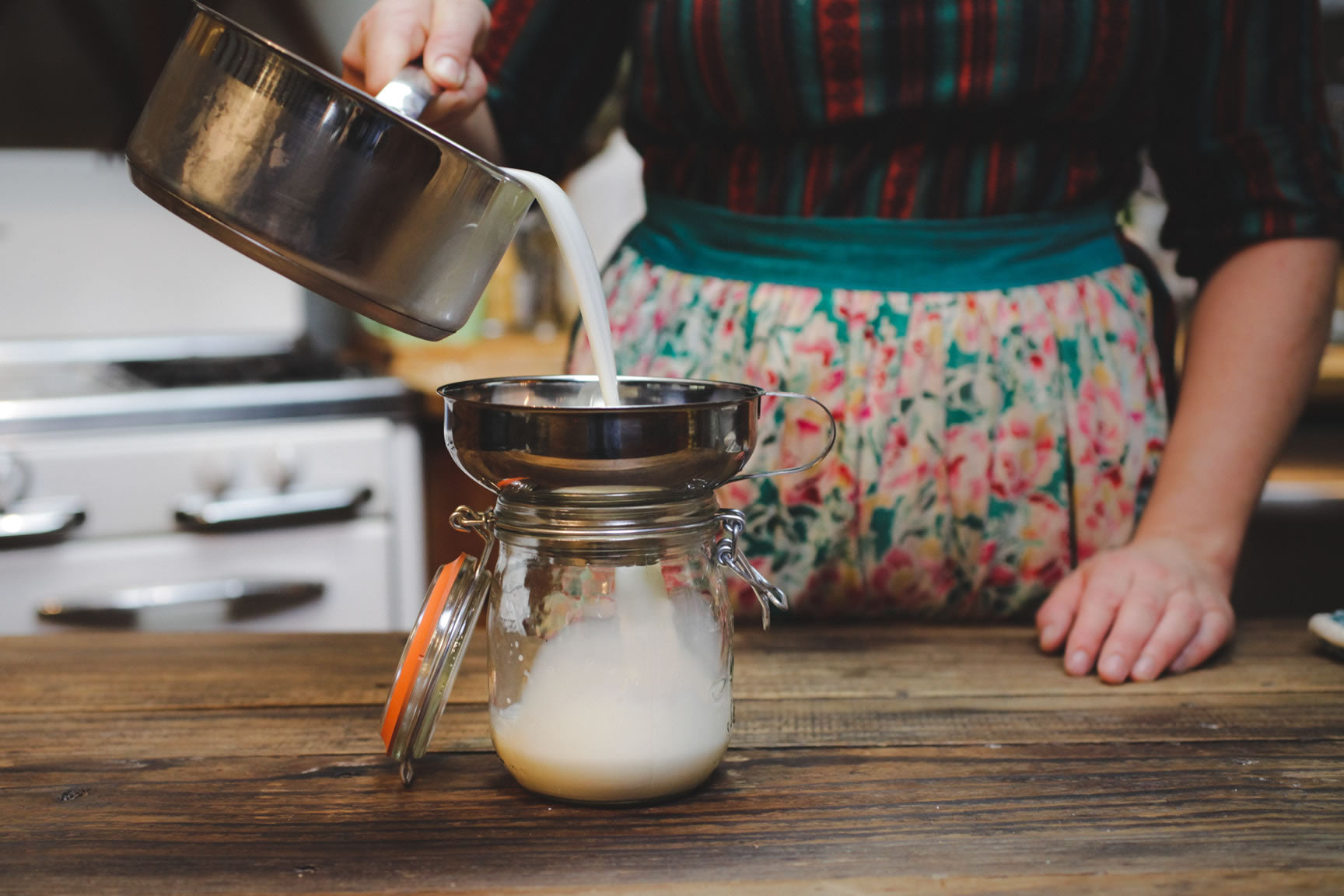- Continue Shopping
- Your Cart is Empty
Yogurt Making Basics - Reap the Benefits of Homemade Yogurt

Here at Mountain Feed, we are always looking for ways to reduce the distance between us and our food. That means making some of the most common items we purchase at the grocery store right in our own kitchens.

Save Money and Live Healthier by Making Yogurt at Home
Tired of buying expensive yogurt at the grocery store? Want to reduce your footprint on the earth by using less plastic? A family of three or four can go through upwards of 2 quarts of yogurt each week!
If you are a Greek yogurt convert you might even spend a small fortune on the thick, creamy wonder of FAGE® or Chobani®. As it turns out, you can easily make delicious, fresh yogurt at home with two simple ingredients—milk and a starter culture.
After all, yogurt is a result of the simple process of milk fermentation that contains Lactobacillus bulgaricus and Streptococcus thermophilus (don’t worry, you don’t have to learn how to say those words to make your own yogurt!).

Homemade Yogurt Tastes Better and Costs Less
Is yogurt really as expensive to make at home as it is to buy in the store? Most of us don’t think twice about buying yogurt. It is just one of those staples that we pick up regularly in the dairy aisle.
But if we knew just how easy yogurt was to make we could skip the yogurt aisle in the store and head straight home to start a batch of yummy, nutritious homemade yogurt. A half gallon of milk can cost $3-$5 and a quart of yogurt can cost $4-$6.
Homemade yogurt is less than half the cost of buying. It also tastes amazing and you will know exactly what is in yours - no more reading labels and playing guessing games. You can also try many more varieties of yogurt by making your own.
Never tried “sweet” yogurt? There’s a culture for that. What about Greek or Bulgarian Yogurt?
How Do I Get the Flavor and Consistency I’m Used To?
There are couple of factors that come into play when making yogurt with a starter culture, but honestly, it’s a very straightforward process. Here are a couple ways to get your homemade yogurt tasting the way you like it...
1) Choosing the Right Milk
The type of milk you use is up to you. Here are a couple of general rules to follow when choosing milk for homemade yogurt...
- Whole cow’s milk will make a thicker, creamier yogurt
- Nonfat, 1% & 2% cow’s milk, goat’s and sheep’s milk will make a thinner yogurt.
- The less fat your milk has in general, the thinner the finished product will be.
- Many people say that adding non-fat powdered milk when making yogurt will help thicken the finished product
- People also say that straining your finished yogurt will make a thicker “Greek Style” yogurt.
 2) Choosing the Right Yogurt Starter Culture
2) Choosing the Right Yogurt Starter Culture
As for the yogurt starter culture, we sell a number of different varieties (even a Vegan Yogurt Starter). Choose the variety that best fits your personal taste bud preferences.
The function of the starter culture is for the live bacteria in the culture to ferment the milk sugars known as lactose in order to create lactic acid that causes the milk to clot. The composition of the yogurt depends on the type of milk and the amounts and/or types of the bacterial starters used.
3) Making Yogurt from a Re-Culture
Yogurt can also be made from a “re-culture”. This means you can make many batches of yogurt from your first batch. Just save a bit of your first batch to culture your milk in the next batch.
A new batch of yogurt can also be made using milk and a small amount of a store bought yogurt, as long as that yogurt has live and active cultures (not all yogurt does!). So MANY options!

Over to You
You can find everything you need to get started on your own yogurt making adventures in our Starter Cultures Department, the Cheesemaking Department, and the cultures and yogurt making section of our Homestead Library. Check out our foundational basic yogurt making recipe.
It’s part of our mission here at Mountain Feed to help you make delicious, sustainable, homemade food more often. Stop by and say hello on Facebook, Twitter, Instagram or Pinterest. Or, as always, you can do it the old fashioned way and come by the store to speak with one of our in-house experts.
Keeping a great journal leads to delicious results! Get inspired by new recipes, expert articles and homemade food adventures in our Monthly Journal.

 2) Choosing the Right Yogurt Starter Culture
2) Choosing the Right Yogurt Starter Culture